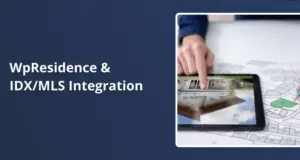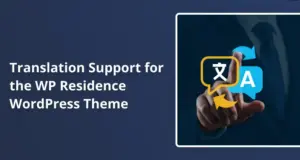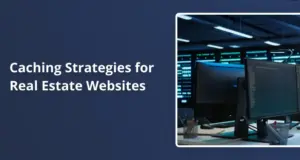Ah, the sweet thrill of real estate website setup that’s both stunning and functional. Whether you’re new to building a WordPress property site or looking to upgrade from a basic template, this property listing website guide has you covered.
But worry not, I’m here to help you navigate through the wild world of WordPress real estate design. In this article, I’ll share some foundational tips to get you started, including my experience choosing the right platform to kick off your project.( You can also look over this article about How to Build a Real Estate Website with WordPress and see if you discover some hidden gems)
Then I’ll go into some advanced techniques for customizing your template that are bound to make your competitors green with envy. Let’s dive in!
Pre-Launch Setup
Choosing Reliable Hosting:
Choosing the right hosting for your real estate website is like picking the perfect location for a property. You wouldn’t put a luxury penthouse in a flood zone, would you? Now, I’ve danced the hosting dance long enough to know that not all hosting providers are created equal. I learned this the hard way, my first site crashed right before a big launch party.
That’s when I discovered the beauty of managed WordPress hosting. These plans offer gems like automatic backups, SSL certificates, and built-in caching.
And here’s a pro tip: If you’re targeting a specific location, go for hosting providers with data centers near your market. It’s all about that speed because if your site loads slower than a dial-up connection, you’re going to lose clients faster than I lose Wi-Fi in the subway.
And don’t forget the 24/7 customer support. You want a host who’s got your back at 2 AM, right? Trust me, that’s the time the magic happens .or, in my case, the last-minute edits before a big property listing goes live.
Selecting a Domain Name:
Next up, let’s talk about your domain name. This is the URL that will become your real estate empire’s home on the internet. Pick something short and memorable. Think “YourCityLuxuryHomes.com” rather than “ReallyLongAndUnlikelyDomainNameThatNobodyWillEverTypeIntoTheirBrowserBar.com.” You’re building a brand, after all.
And here’s the kicker: you want a .com domain if you’re aiming for global credibility. Local is lovely, but .com screams professionalism. If your brokerage has a strong brand identity, align your domain with it. If they’re all about cutting-edge, modern homes, reflect that in your URL. You want visitors to your site to be able to remember and spell your domain with ease. No additional brain cells required.
Installing WordPress and Your Real Estate Template
WordPress Installation:
Now that we’ve got the basics sorted, let’s get down to business. Installing WordPress on your hosting account should be a breeze. If your host doesn’t offer one-click installers like Hostinger’s Auto Installer, just contact their support team. They’ll often handle it for you.
But if you’re tech-savvy, the manual installation guide is a piece of cake. Just make sure to enable SSL so your site’s secure. It’s like putting a lock on your front door : important for keeping your visitors safe.
As you’re diving into WordPress, look into IDX/MLS integration plugins like MLSimport.com . They’re like magic fairy dust for real estate sites, making it easy to display live property data right on your website.
You’ll be the only one in your neighborhood who can boast about featuring live data. And here’s a little secret: while you can use free plugins, premium ones often offer better support and more features. I’ve had my fair share of plugin issues. Sometimes, you get what you pay for.
Activating Your Professional Real Estate Theme
After you’ve got WordPress set up, it’s time to choose and activate your professional real estate theme. A well-optimized WordPress property site relies on a theme built specifically for real estate professionals.
One that supports IDX/MLS integration, responsive design, and customizable property listing layout.
Upload your theme’s ZIP file and activate it via the Appearance menu in your WordPress dashboard. Most premium themes come with recommended plugins. These are carefully selected to optimize your website and make your life easier.
You’ll want property listing plugins, lead capture plugins, and SEO plugins, oh my! But take note: if you’re considering integrating IDX/MLS data, check for compatibility with your chosen theme. I’ve spent far too long trying to make square pegs fit into round holes. Don’t be like me.
Initial Configuration and Layouts
Permanlinks, Site Title, and Tagline:
Now that your theme is live and making your heart sing, it’s time to get serious about SEO. Go to Settings > Permalinks and set your permalinks to a descriptive structure. Try “/%category%/%postname%/.” This structure is a little more complicated than “/%postname%/” but gives context to your URLs, making it easier for Google to index your content.
For example, a URL for a listing on 123 Main St. in Chicago would look like this:
- https://www.yourcityluxuryhomes.com/chicago/condo/123-main-st/
Also, include a localized tagline. “Your Guide to Chicago Real Estate” is a good one. It’s short and to the point. And remember to check your language settings and time zone. Accurate dates and times are key for booking and showing appointments.
Defining a Static Homepage and Listings Page:
What you really want is a homepage that converts like crazy, right? Well, I’m here to tell you that setting up a static homepage is a great start. Your homepage should be a seamless experience, making it easy for visitors to find what they’re looking for.
A professional hero image, a property search bar, and highlighted listings should be front and center. You want to engage your visitors instantly, compelling them to act. And for your listings page, keep it simple and organized. You want everything accessible and easy to navigate. There’s nothing worse than a site where everything is scattered across a dozen pages. Make it easy for your visitors, and they’ll reward you with their business.
Basic Visual Customization
Theme Customizer Basics:
Once your site is up and running, it’s time to dive into the Theme Options or Customizer. Head to Yor theme options or Appearance > Customize and start tweaking. Change up your fonts, colors, and layouts until everything looks perfect. Your color palette is particularly important. I recommend something that complements your logo, evokes trust, and maintains readability against those beautiful property photos you’re going to post. Trust me; you don’t want a palette that resembles a bad 70s wallpaper.
Core Branding Elements:
Your logo should be high-resolution and visible on both light and dark backgrounds. Oh, and don’t forget to upload a favicon. It’s that little icon that appears in the browser tab and on mobile home screens. While you’re at it, make sure your imagery is consistent and professional. Use high-quality property photos, local neighborhood shots, and avoid any “let’s-not-distract-from-the-property” photos that look like you snapped them while driving.
And that’s it! You’re all set to start making your mark in the real estate world. With the right tools and a bit of flair, your real estate website will be the talk of the town.
Integrating Elementor for Full Control
Before you dive into the world of customizations, let’s talk about why Elementor is the bee’s knees for real estate websites. With Elementor, you’re not just slapping text and images on a page; you’re crafting a user experience that sings.
- Why Use Elementor: Picture this: a front-end visual editor that allows you to tweak designs in real-time. Gone are the days of making changes and then crossing your fingers and toes to see if they actually worked. With Elementor, you see it as you make it. No coding required. Drag-and-drop widgets are your best friends here.
- Single Property and Archive Templates: One of the coolest things about Elementor is the Theme Builder feature. You can design bespoke templates for individual listings and property archives. Make sure to include key information like listing details, price, and agent contact info right at the top. Because let’s face it, what’s the point of hiding crucial info below the fold?
- Custom Headers and Footers: Ditch the generic theme headers and footers. Design custom options with Elementor to include your branding, CTAs, and navigation menu. This small change can make a big difference in how users perceive your brand.
Advanced Search, Filtering, and IDX/MLS Feeds
Nothing screams frustration more than a clunky property search on a real estate website. That’s why integrating advanced search filters and IDX/MLS feeds is a game changer. Users can filter by price range, property type, location, and even those niche features like pools or home offices. Don’t forget to add map-based search options because who doesn’t love being able to see a neighborhood at a glance?
- Refined Property Searches: Integrate advanced filters that allow users to search by price range, property type, location, or features like pools, home offices, etc. Consider adding map-based search functionalities so visitors can visually explore neighborhoods.
- IDX/MLS Integration: Connect your site to IDX/MLS providers for automatic property updates. This not only ensures data accuracy but also makes sure your listings are current and trustworthy.
Enhancing the Visual Experience with Elementor
Who doesn’t love a good eye-candy listing? Using Elementor, you can create media-rich listings that draw in potential buyers. Use image sliders, carousels, and video widgets to showcase your properties. And let’s not forget virtual tours and floor plan images. These tools are essential for giving prospective buyers a clear vision of their next home.
- Media-Rich Listings: Utilize image sliders, carousels, or video widgets to display properties in a way that’s appealing and immersive. Consider incorporating virtual tours (3D walkthroughs) and floor plan images to give potential buyers a deeper understanding of each property.
- Pop-Ups and Lead Capture Forms: Use Elementor’s pop-up builder to create CTAs like “Get Market Updates” or “Schedule a Viewing.” Strategically place contact forms, mortgage calculators, or instant valuation tools on property detail pages to capture leads effectively.
Optimizing Your Real Estate Website
Okay, you’ve built this stunning real estate website. Now what? It’s time to make sure it gets the love it deserves. Optimizing your site for search engines, performance, and security is not an afterthought. It’s a necessity.
- Search Engine Optimization: Add meta descriptions, alt text, and title tags to help your site rank on search engines.
- Performance and Security: Use caching plugins and SSL certificates. Nobody likes a slow site or a security breach.
- Analytics and User Behavior: Use Google Analytics and heatmaps to understand what users are doing on your site.
Your Ultimate Property Listing Website Guide: Local SEO and Visibility Tips
Let’s start by boosting the visibility of your website using real estate SEO strategies. After all, you could have the best-looking real estate website out there, but if no one can find it, it’s just another digital ghost town.
Location-Specific Keywords
First things first, make sure you research and incorporate targeted keywords into your page titles, headings, and meta tags. For example, if you’re selling luxury condos in Miami, use phrases like “luxury condos in Miami” to attract potential buyers searching for upscale living.
Next, create detailed neighborhood guides, school district overviews, and market reports to attract hyper-local traffic. This content not only draws in visitors from your target area but also positions you as the go-to expert in your locale. When potential buyers are looking to settle in a new area, they want to know about the schools, the local hangouts, and the general vibe of the neighborhood. Providing detailed insights on these topics can help your audience envision their lives in the community you serve.
Schema Markup and Google Business Profile
Implement schema markup for listings to help search engines display rich snippets. This is just a fancy way of saying it helps your property listings stand out in search results.
And don’t forget to claim and optimize your Google Business Profile! Accurate NAP (Name, Address, Phone) details ensure local credibility and Map Pack visibility. Claiming your Google Business Profile allows you to control the information Google displays about your business. Make sure to fill in all the details. This is your chance to make a great first impression!
Backlinks and Citations
Network with local home inspectors, interior designers, and mortgage brokers to earn backlinks. These connections not only enhance your credibility in the industry but also bring valuable referral traffic.
Get listed in reputable local directories and real estate portals to improve your site’s authority. Backlinks from high-quality sources are like a vote of confidence for search engines.
Content Marketing and Authority Building
Now that we’ve got our SEO sorted, let’s talk about establishing authority with content marketing. Building trust with your audience is essential, especially in real estate, where decisions involve significant financial commitments.
Regular Blogging and Market Updates
Publishing weekly or monthly articles offering home-buying guides, mortgage tips, and seasonal maintenance checklists can keep your audience engaged. Consistency is key: show your readers they can rely on you for fresh insights.
Bonus tip: Use Elementor templates to maintain a consistent, attractive look for each blog post. Elementor is a fantastic tool that allows you to create stunning pages without touching a line of code. The templates are easy to use and highly customizable, so you can match your brand’s aesthetic perfectly.
Showcasing Testimonials and Social Proof
Feature written and video testimonials from satisfied clients to build trust. Real experiences shared by real people go a long way in boosting your credibility.
Highlight any awards, media mentions, or professional certifications that reinforce your credibility. Don’t be shy! Show off your hard-earned accolades!
Performance, Security, and Analytics
We’re almost there! But before we wrap things up, let’s ensure our website runs smoothly and securely. Optimizing speed and protecting user data is critical to keeping visitors happy.
Speed Optimization
Compress images, enable browser caching, and utilize a CDN for faster load times. As recommended by Hostinger, a content delivery network (CDN) can significantly enhance your website’s performance by caching content closer to your users.
Routinely test page speed with tools like GTmetrix or Google PageSpeed Insights to identify areas for improvement. These tools provide detailed reports on what’s working well and what might be slowing you down, making it easy to tweak your site for optimal performance.
Security Best Practices
Keep WordPress core, themes, and plugins updated to patch vulnerabilities. Outdated software is a hacker’s playground, so staying current is crucial.
Use security plugins that limit login attempts, scan for malware, and integrate firewalls. There are plenty of great selection out there. Find one that works for your setup.
Analytics and Data-Driven Decisions
Install Google Analytics or similar tools to track traffic sources, user paths, and conversion funnels. Understanding how users interact with your site is essential for making data-driven decisions.
Evaluate which listings are most popular, which pages have high bounce rates, and how users interact with CTAs (call-to-action elements). This information can help you tailor your content to better meet your audience’s needs.
Adjust navigation, content strategy, and design elements based on data insights. The numbers don’t lie: make changes based on what your data is telling you.
Ongoing Maintenance and Growth
Congratulations, you’ve built a fantastic real estate website! But the work isn’t done. Regular maintenance and growth strategies will keep your site fresh and competitive.
Regular Audits and User Feedback
Periodically review your site structure, check for broken links, and update outdated listings. A little housekeeping can go a long way.
Gather feedback from clients and visitors. Consider surveys or polls to understand pain points and improve the user experience. Listening to your audience is key to delivering what they need.
Scaling Your Site and Services
Add new neighborhoods, property types, or investment opportunities as your business grows. Keep your content up-to-date to maintain its relevance and value.
Integrate additional features like appointment scheduling tools, chatbots, or CRM integrations for advanced lead management. As your business grows, your tools should grow with it!
Why WP Residence and MLSimport.com Are Your Best Real Estate Website Buddies
Remember how crucial it was to choose a flexible, real estate-focused theme for your website? Enter WP Residence. It’s got an intuitive interface, extensive documentation, and compatibility with top hosting environments. Translation: It’s like having a GPS that only takes you to the best pizza joints. What more could you ask for?
- Ready-Made Demos and Layout Options: With WP Residence’s extensive collection of ready-made demos and layout options, you can go from installation to a polished homepage faster than you can say, “I need a property listing yesterday!” Choose from various designs that match your brand aesthetic, whether you’re going for modern minimalism or classic sophistication.
- Built-In Property Management System: Organize your listings with WP Residence’s built-in property management system, ensuring a clean starting point for integrating IDX/MLS data. Say goodbye to spreadsheets and hello to a seamless, visually appealing way to manage your listings.
Elevating Listing Data with MLSimport.com
A little early, we stressed the importance of accurate, real-time property data. That’s where MLSimport.com comes in, delivering MLS/IDX feeds straight into WP Residence. This means your listings are always fresh and precise, keeping your clients coming back for more.
- Plug-and-Play IDX/MLS Integration: With MLSimport.com, integrating IDX/MLS data into your WordPress site is as easy as pie. No complicated code or third-party wrestling necessary!
- Real-Time Property Updates: Trustworthiness is key in real estate. MLSimport.com ensures your property details are always up-to-date, supporting your content quality and reliability.
Customizing and Expanding Functionality Together
Advanced customization is where the magic happens, and WP Residence and MLSimport.com make it a breeze. With WP Residence’s customization options and MLSimport.com’s dynamic data presentation, you can implement personalized experiences and enhancements without breaking a sweat.
- Dynamic Listing Templates: Modify listing templates and search filters with WP Residence so that MLSimport.com’s data is displayed in a user-friendly way. Make it easy for clients to find what they’re looking for, fast.
- Compelling Property Detail Pages: Create compelling property detail pages enhanced by automated MLS feeds, ensuring buyers always see relevant, up-to-date information. Make your listings irresistible with detailed, accurate information that highlights every property’s best features.
Supporting SEO, Performance, and Ongoing Growth
Now let’s talk about SEO, performance, and growth. WP Residence’s clean code and compatibility with top caching and SEO plugins, plus MLSimport.com’s accurate feeds, give you a strong foundation for search visibility and site speed.
- Enhanced Listing Data: MLSimport.com ensures your listings are updated automatically, supporting ongoing SEO efforts and sustained user engagement. Keep your site fresh and your clients coming back for more.
- Scalable Solution: As your site grows, adding new neighborhoods or property categories, the combined flexibility of WP Residence and MLSimport.com scales with ease, so you won’t have to deal with any technical headaches.
Seamless Alignment with Previous Recommendations
Instead of relearning everything, let’s talk about how these tools complement what you’ve already done. WP Residence and MLSimport.com work with your existing setup, strengthening and streamlining each element, saving you time and ensuring your future adjustments can be implemented quickly and confidently.
- Toolbox for Future Adjustments: WP Residence and MLSimport.com work with, rather than against, your current setup, so any future adjustments , be it design tweaks or data updates, can be implemented quickly and confidently.
- Collaborative Improvement: These tools don’t require you to reinvent your workflow; they strengthen and streamline every step you put in place. Get a better user experience and a stronger online presence.
And there you have it: your complete guide to setting up and customizing a real estate website template. Remember, your website is a living, breathing entity. Keep it updated, fresh, and engaging, and it will serve you well for years to come.
Now, go forth and create a website that not only looks amazing but also delivers results. Happy customizing!








